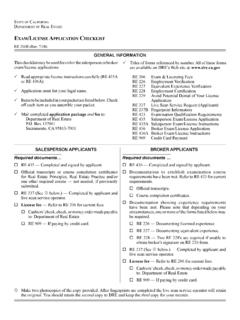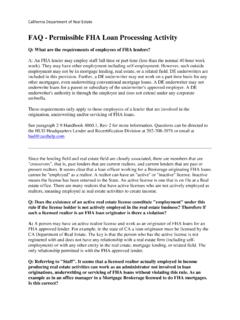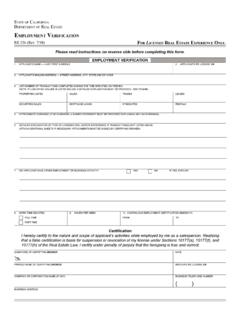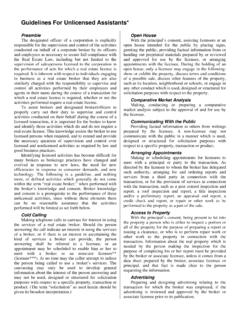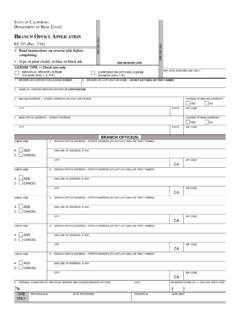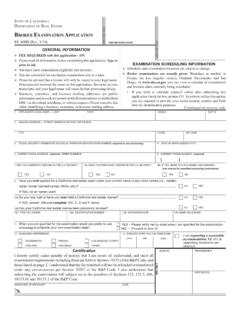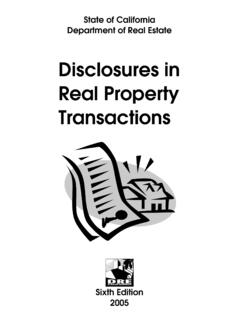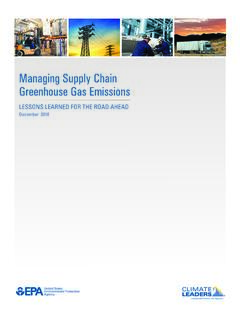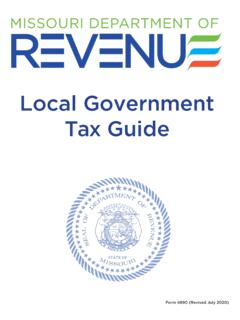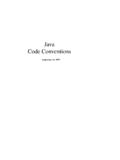Transcription of RESERVE STUDY GUIDELINE - California Department of …
1 State of California Department of Real Estate RESERVE STUDY GUIDELINES for Homeowner Association Budgets August 2010 State of California Department of Real Estate RESERVE STUDY GUIDELINES for Homeowner Association Budgets August 2010 This independent research report was developed under contract for the California Department of Real Estate by Eva Eagle, , and Susan Stoddard, , AICP, Institute for the STUDY of Family, Work and Community and David H. Levy, , Janet Andrews, MBA, was responsible for the original design, layout, and typography. The Department of Real Estate revised this publication in August 2010.
2 It includes updates by Roy Helsing PRA, RS to insure it aligns with current California Law and the guidelines of the Association of Professional RESERVE Preparers (APRA) and the Community Associations Institute (CAI)., The report does not necessarily reflect the position of the Administration of the State of California . NOTE: Before a homeowners association decides to prepare its own RESERVE STUDY , it should consider seeking professional advice on that issue. There are issues concerning volunteer board member indemnification, reliance on expert advice, and other factors that should be considered in that decision.
3 The goal of this manual is to help the reader better understand RESERVE Studies. It is not the intent of this manual to define the standard of care for RESERVE Studies or to interpret the California Civil Code. Department of Real Estate Publications 2201 Broadway Sacramento, CA 95818 Web site: Table of Contents Preface .. iv 1. Introduction .. 1 Importance of RESERVE Studies .. 1 Content of RESERVE Studies .. 1 2. How Do Reserves Fit into the Overall Financial Plan? .. 8 3. What Are the Steps in Doing a RESERVE STUDY ? .. 9 Resolve to Have a RESERVE STUDY .
4 11 Identify the Work Products .. 12 Develop a Work Plan .. 12 Conduct the Component and Funding 13 Accept, Disclose, and Implement the 13 4. What Are the Steps in Conducting a Physical Analysis? .. 13 Criteria for Components .. 14 Developing a Component List .. 15 Specifying the Quantity of Each Component .. 15 Determining the Useful and Remaining Life of Each 16 Determining the Cost of Replacement .. 18 Using Component Data to Develop the Funding Analysis .. 18 Documenting Maintenance Assumptions .. 18 5. What is Involved in Developing a Funding Analysis?
5 20 Determining the Funding Goal for Replacement Reserves .. 20 Desired Balance .. 23 Estimating Association RESERVE Fund Income .. 24 Projecting Expenditures and RESERVE Funding Needs .. 25 Estimating Interest Earnings of RESERVE Account Over Funding Analysis Period .. 26 Statement of Limitations and Assumptions .. 27 27 6. How Do Boards Hire Qualified Professionals to Perform RESERVE Studies? .. 31 Physical Analysis Products for Consultants .. 31 Funding Analysis Products for 31 Information the Board Should Provide .. 32 7. What Are the Red Flags that Signal Potential Problems?
6 35 STUDY 35 Replacement Funds .. 35 ii List of Exhibits California Civil Code Sections 1365 and .. 3 Steps in Providing for Adequate Reserves .. 11 Steps in the Physical Analysis Process .. 14 Determining the Replacement Schedule .. 17 Physical Analysis Checklist .. 19 Steps in the Funding Analysis Process .. 21 Calculating the RESERVE Deficit .. 23 Determining the Future Cost of Replacement .. 26 Funding STUDY , Estimated Cash Requirements by Year .. 28 Funding STUDY , Major Component Liability by Year (continued).
7 29 Funding STUDY Checklist .. 30 Interview Guide for Physical Analysis Preparers .. 33 Interview Guide for Funding Analysis Preparers .. 34 Appendix A - Major Common Area Components Usually Included .. 36 Appendix B - Major Common Area Components Frequently Overlooked .. 37 Appendix C - Sources for Inflation Rate 38 iii Preface California s Common Interest Development Act requires that associations prepare and distribute financial information, including a plan for funding future replacement of major components (roofs, exterior paint, and so on). RESERVE STUDY Guidelines for Homeowners Association Budgets has been developed to assist boards of directors of California common interest developments (CIDs) to better understand the preparation of the RESERVE STUDY portion of the association s annual pro forma operating budget, as this document is defined in California Civil Code Section 1365, and to assist buyers in understanding the financial implications of an association s replacement RESERVE funding.
8 The term reserves as used in this context refers to the funds set aside to cover these replacement costs. The board of directors must make decisions about the funding goals of the association. These guidelines should enable readers to answer the following questions: How do reserves fit into the overall financial plan? What are the steps in doing a RESERVE STUDY ? What are the steps in conducting a Physical Analysis of common area major components? What is involved in developing a Funding Analysis? How do boards hire qualified professionals to perform RESERVE studies? What are the red flags that signal potential problems?
9 These guidelines were developed with the assistance of numerous industry professionals, association board members and managers and the Department of Real Estate. The approach described in these pages has been developed from examples of current RESERVE studies, and from the comments and suggestions of industry leaders. In following the suggestions presented here, a board should consult with the association s own attorney, accountant, or other advisors, as necessary. iv 1. Introduction Common interest developments (CIDs) are defined by shared property and restrictions in the deed on use of the property.
10 A CID is governed by a mandatory association which administers the property and enforces its restrictions. The association is responsible for repairing, replacing, or maintaining the common areas. The owner of each separate interest is responsible for maintaining that separate interest and any exclusive use common area appurtenant to the separate interest. ( California Civil Code Section 1364) Importance of RESERVE Studies A RESERVE STUDY provides a current estimate of the costs of repairing and replacing major common area components (such as roofs or pavement) over the long term. Ideally, all major repair and replacement costs will be covered by funds set aside by the association as reserves, so that funds are there when needed.
